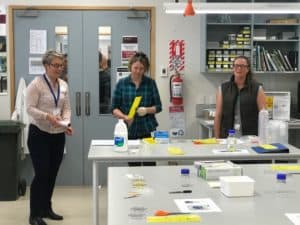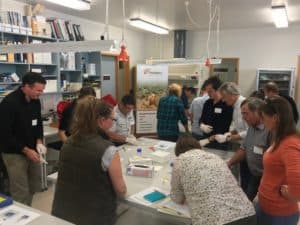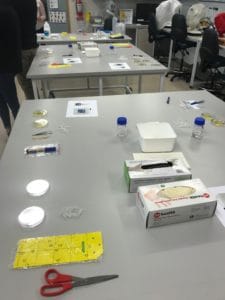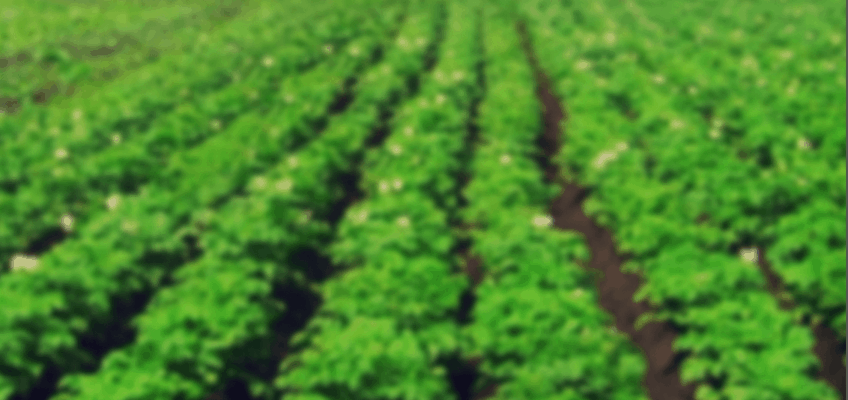The inaugural Pest Management and Biosecurity Preparedness Workshop was held at Plant & Food Research in Lincoln in early November. Representatives from Eurogrow, Fruitfed, McCain Foods, SGS, Seed & Field Services, Southern Star Seeds, Talley’s and independent experts attended the workshop, which was brilliantly lead by Jessica Dohmen-Vereijssen and her team.
Attendees undertook a number of activities including TPP (Tomato Potato Psyllid) identification and a practical lab based exercise of removing TPP from yellow stick traps. This was followed by a brainstorming and best practice sharing workshop about proactive biosecurity.


The demonstrated protocol for removing TPP from Yellow Sticky Traps is as follows… For more information please contact Gabby Drayton at PFR.
EQUIPMENT

- Plastic petri dishes (90mm diameter or larger)
- De-Solv-It
- Collection tubes
- Tooth picks (fine tip)
- Scissors
- Small plastic zip lock bags
- Marker pen and paper
- Tweezers (disposable, or metal)
- Disposable gloves
- Bleach (25% solution)
- Paper towels
- Fine sieve (or tea sieve) and funnel (for the reuse of De-Solv-It)
- Containers (preferably glass (i.e. Schott bottles), to store used De-Solv-It in for reuse)
METHOD
- Ensure you have identified the tomato potato psyllid (TPP) on the yellow sticky trap (YST).
- Put on gloves (new pair of gloves for each YST).
- Using scissors, carefully cut out sections of YST containing TPP. Leave a 1-3 cm margin between TPP and the cutting point, as you don’t want to damage the TPP (cutting too close can result in additional pressure placed on the TPP by the cover slip, i.e. squashing the TPP and losing gut contents which is needed for molecular analysis).
- Also, check both sides of the YST to make sure you are not cutting through or too close to any TPP on the other side. If there is a group of TPP close together cut them out as one, they don’t need to be cut out individually. Record the number of TPP cut out. Wipe scissors with 25% bleach solution between YSTs using a new paper towel. Add enough De-Solv-It to the petri dish (~1 cm depth) to submerge the cut YST sections.
- Place the cut sections of one YST in a petri dish with TPP facing down in the De-Solv-It. If you have YST sections with TPP on both sides, try to submerge the entire section. If you can’t fit all the cut sections from one YST in one petri dish, then set up a second petri dish, but make sure all petri dishes are labelled. Either label the lid of the petri dish or on a piece of paper tucked under the petri dish, but avoid using marker pen on the underside of the petri dish as the De-Solv-It will remove it if any spills.
- Add petri dish lid and check after 30 minutes. Most of the coverslips (i.e. gladwrap/cling film) should have detached from the YST and TPP should be floating at the bottom of the petri dish. If any cover slips or TPP remain attached, they should come off very easily if you gently move the section of YST
Remember if you see any exotic pests or diseases… Catch it, Call the MPI on 0800 80 99 66.
These workshops are part of Potatoes New Zealand’s commitment to proactive biosecurity readiness and response, as part of our obligations as a GIA signatory. Any questions or feedback please contact Chris Claridge, Chief Executive through our contact form.



